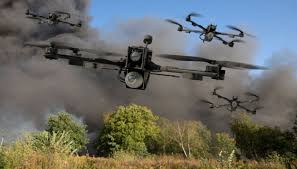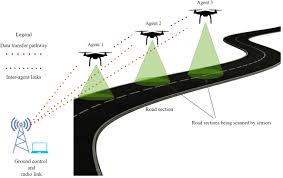
Introduction
The Nano-Swarm Defense System (NSDS) is a cutting-edge innovation envisioned to revolutionize battlefield protection and surveillance using autonomous nanobot swarms. Unlike traditional body armor or static defense systems, NSDS would consist of millions of microscopic AI-controlled nanobots that form a dynamic, adaptive defense layer around soldiers or military assets. These nanobots could neutralize threats, repair damaged equipment, and even enhance stealth capabilities in real time. While still theoretical, advances in nanotechnology, AI, and swarm robotics suggest that this innovation could become a game-changer in future warfare.
How NSDS Works
The Nano-Swarm Defense System would function through:
- Autonomous Threat Detection: Nanobots scan the environment in real-time, identifying potential threats such as incoming bullets, drones, or cyber intrusions.
- Adaptive Armor Formation: Upon detecting an attack, the nanobots instantly form a hardened barrier or energy-absorbing layer around the soldier or equipment.
- Self-Healing and Maintenance: The swarm can repair damaged armor, vehicles, and weapons, increasing battlefield longevity.
- Stealth and Camouflage: Nanobots adjust their structure and color to blend into surroundings, making soldiers and equipment nearly invisible.
- Electronic Warfare & Cyber Defense: The system can intercept enemy signals, disable drones, or block cyber-attacks in real time.
Potential Applications

1. Personal Soldier Protection
Soldiers equipped with NSDS would have an adaptive armor shield that provides instant protection from bullets, shrapnel, and explosives, reducing fatalities on the battlefield.
2. Autonomous Drone Countermeasures
The nanobots could disable or hijack enemy drones, preventing aerial surveillance or attacks.
3. Rapid Equipment Repair
Damaged tanks, exosuits, or firearms could be instantly repaired by swarming nanobots, reducing downtime during combat.
4. Stealth and Invisibility Cloaking
By manipulating light reflection, nanobots could create an optical invisibility field, making soldiers and assets undetectable.
5. Cyber Warfare and Communication Jamming
NSDS could deploy micro-swarms to hack enemy networks, intercept signals, or disrupt electronic systems, giving a tactical advantage in modern warfare.
Challenges and Ethical Concerns
- Nanobot Control & AI Autonomy: Ensuring that nanobots remain under human control and don’t malfunction is critical.
- Ethical Use of AI Warfare: The system could be misused for undetectable assassinations or cyber-attacks, raising legal concerns.
- Cybersecurity Risks: If hacked, enemy forces could redirect the nanobot swarm to attack friendly units.
- Energy Consumption: Powering millions of nanobots on the battlefield requires a breakthrough in miniature energy sources.
Future of NSDS

In the coming years, we could see:
- Miniaturized AI chips allowing smarter, more autonomous nanobots.
- Integration with Neural-Linked Combat Systems (NLCS) for mind-controlled nano-swarm coordination.
- Advanced energy solutions, like micro-scale fusion batteries, to keep nanobots active for extended missions.
- International treaties and regulations defining ethical AI warfare practices to prevent misuse.
Conclusion
The Nano-Swarm Defense System (NSDS) could revolutionize military defense, electronic warfare, and stealth operations. By utilizing AI-driven nanobot swarms, future soldiers and military forces would be faster, more adaptable, and nearly indestructible on the battlefield. While still in early research, NSDS has the potential to reshape modern warfare, blending nanotechnology, AI, and swarm robotics into a single, intelligent defense system. However, addressing cybersecurity, ethical concerns, and energy efficiency will be crucial before its deployment in future conflicts.
